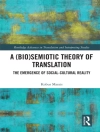Linguists who have studied simplified varieties of a given language, such as pidgins or the language of care-givers, have tended to explain similarities in their structure by the fact that they use the same mechanisms of simplification. Bruthiaux tests this idea by looking at the structure of classified ads in American English, using a body of 800 ads from four categories: automobile sales, apartments for rent, help wanted, and personal ads. Bruthiaux’s thesis is that strict, uniform constraints on space should result in uniformly simple texts, no matter which category they are in, and that any variation would be due to the particular needs of each category. To prove this he describes the linguistic structure of classified ads, and shows that they are characterized by a minimal degree of morphosyntactic elaboration. He then examines aspects of their conventions to highlight the role of pre-patterned and prefabricated segments whose collocational rigidity may force the inclusion of otherwise dispensable items. He finds that there is indeed significant variation across ad categories in terms of morphosyntactic elaboration, and concludes that this is due to a greater or lesser need to be explicit, as well as a greater or lesser anticipation of interaction. Finally, he examines the implications of these findings for the study of linguistic simplification and register variation.
Paul Bruthiaux
Discourse of Classified Advertising [PDF ebook]
Exploring the Nature of Linguistic Simplicity
Discourse of Classified Advertising [PDF ebook]
Exploring the Nature of Linguistic Simplicity
Cumpărați această carte electronică și primiți încă 1 GRATUIT!
Limba Engleză ● Format PDF ● ISBN 9780195356601 ● Editura Oxford University Press ● Publicat 1996 ● Descărcabil 6 ori ● Valută EUR ● ID 2277733 ● Protecție împotriva copiilor Adobe DRM
Necesită un cititor de ebook capabil de DRM












